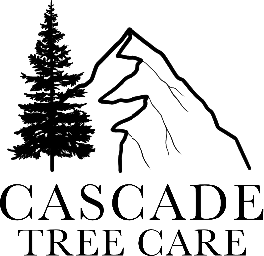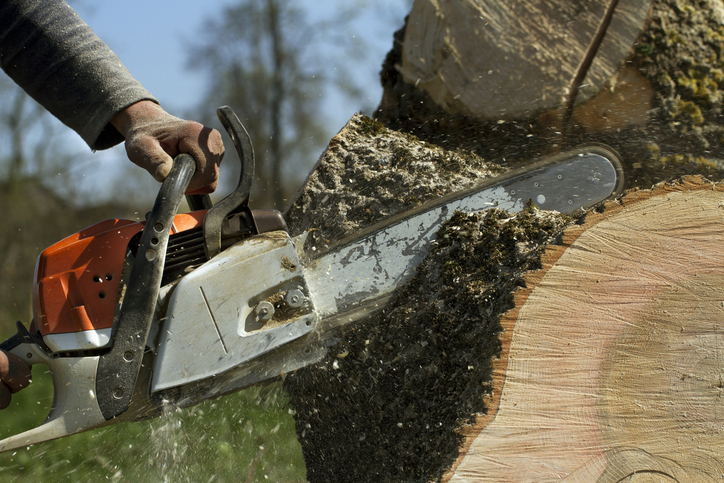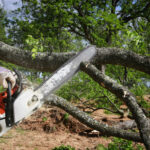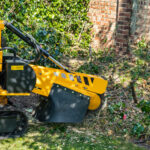Introduction
Removing tree stumps is often the final step in the tree removal process, yet it’s one that many homeowners overlook. A leftover stump may seem harmless at first, but over time, it can become an eyesore, a safety hazard, and even a breeding ground for pests and fungi. Whether you’ve recently had a tree taken down or have inherited old stumps in your yard, understanding your options for removal can help you reclaim the beauty and functionality of your outdoor space. In this guide, we’ll walk you through the essentials of stump removal, from identifying why it matters to evaluating tree stump removal methods so that you can make the best decision for your home and landscape.
The Hidden Risks of Ignoring Tree Stumps
1. Why Stump Removal Matters:
Leaving a tree stump in your yard can create more problems than it solves. Aside from diminishing curb appeal, stumps can become a tripping hazard for children and guests, especially when obscured by grass or leaves. Over time, the stump can also attract termites, ants, and fungi, which may spread to nearby plants or even your home. Additionally, some stumps may sprout new tree growth, leading to unwanted maintenance and recurring issues. Removing a stump not only improves the safety and aesthetics of your property but also ensures a cleaner slate for future landscaping or construction projects.
2. The Different Methods of Stump Removal:
There are several approaches to removing a tree stump, each suited to different budgets, timelines, and property needs. Manual removal, using tools like a mattock, axe, and shovel, works well for smaller stumps but is labor-intensive. Chemical removal involves applying potassium nitrate to accelerate the decay process, which typically takes several weeks to complete. Stump grinding is one of the most popular professional methods, utilizing a powerful machine to shred the stump into wood chips. For larger properties or multiple stumps, excavation by heavy machinery might be required. The best method for your situation will depend on the size of the stump, its location, your physical capabilities, and whether you prefer a fast or gradual solution.
3. Pros and Cons of DIY Stump Removal:
DIY stump removal can save money, especially if you already have the necessary tools and a small stump to work on. It can be a rewarding project for experienced homeowners who enjoy hands-on tasks. However, it’s not without risks and limitations. Manual removal can be exhausting and time-consuming, especially for larger or older stumps with deep root systems. Chemical solutions, although less strenuous, involve hazardous substances that must be handled carefully and kept out of the reach of children and pets. Additionally, the improper use of equipment, such as chainsaws or grinders, can pose serious safety hazards. Before committing to a DIY approach, consider your experience level, the tools available to you, and the scope of the task.
4. Benefits of Hiring a Professional:
When it comes to stump removal, professionals offer efficiency, expertise, and peace of mind. Trained arborists or landscaping crews come equipped with specialized machines, such as stump grinders, which can remove even large, tough stumps quickly and safely. They can also assess the surrounding area to avoid damage to underground utilities or nearby structures. Hiring a professional often includes cleanup, leaving your yard in a tidy, usable condition. While the upfront cost may be higher than a DIY project, the reduced risk of injury, property damage, and lingering stump issues often makes it a worthwhile investment. Many companies also offer guarantees or insurance coverage, adding another layer of confidence for homeowners.
5. Cost Factors and What to Expect:
The stump removal cost depends on several factors. Key considerations include the size and diameter of the stump, its accessibility, the chosen removal method, and local labor rates. On average, professional stump grinding can cost between $100 and $400 per stump, while complete excavation may run higher. If multiple stumps need removal, some companies offer volume discounts. DIY removal may cost less, particularly if you rent a grinder for a day, but expenses like tool rental, safety gear, and chemical agents can add up. Always request multiple quotes and check for hidden fees, such as debris removal or yard repair, when budgeting for the project.
6. How Long Does This Task Take?
The timeline for stump removal depends heavily on the method used. Manual digging can take several hours or even multiple days for a large stump, depending on your tools and stamina. Chemical treatments are the slowest method, often requiring several weeks for the stump to soften and decay enough for easy removal. Stump grinding, performed by professionals, usually takes under an hour per stump and is the fastest and most efficient method for most situations. Full stump and root excavation may take longer, especially if the area needs to be backfilled or leveled afterward. Consider your schedule, urgency, and landscaping plans when selecting a removal method.
7. Preparing Your Yard Before and After Removal:
Before removing a stump, it’s important to clear the area of rocks, debris, and plants that could obstruct machinery or tools. Mark any underground utilities by contacting your local utility locator service to avoid accidental damage during grinding or excavation. After the stump is removed, you’ll likely be left with a hole or depression where the roots once sat. Fill this with topsoil or compost and compact it to prevent settling. You can then seed the area with grass, plant new shrubs, or begin a new landscaping project. Proper yard preparation and restoration ensure the area remains safe, visually appealing, and ready for future use.
8. Preventing Regrowth and Pest Issues:
Simply cutting down a tree does not guarantee that it won’t try to grow back. Some species, like poplar and maple, are notorious for sending up new shoots from the stump or surrounding roots. Using a stump grinder to remove as much of the root crown as possible can help minimize regrowth. Applying herbicides to the freshly cut stump or soil may also prevent sprouting, though these must be used cautiously to avoid harming nearby vegetation. In addition to preventing regrowth, timely stump removal reduces the risk of pest infestations. Leftover stumps attract beetles, termites, and fungi, which can pose a risk to healthy trees, lawn health, and even your home’s foundation.
Tree stump removal is more than just an aesthetic choice—it’s a practical and often necessary step to maintain a safe, healthy, and visually appealing landscape. Whether you opt for a DIY method or hire a professional, understanding the process, costs, risks, and long-term benefits will help you make the right decision for your property. From improved yard functionality to pest prevention and future landscaping opportunities, removing that lingering stump is an investment in the beauty and safety of your home.
Conclusion
Are you ready to restore your yard by removing unsightly stumps? Contact our experienced team at Cascade Tree Services at 425-530-9697 for a hassle-free quote and professional tree stump removal services tailored to your needs.
📌Trusted team, fresh name! Cascade Tree Care delivers the expert service you count on — fast, reliable, and professional.



